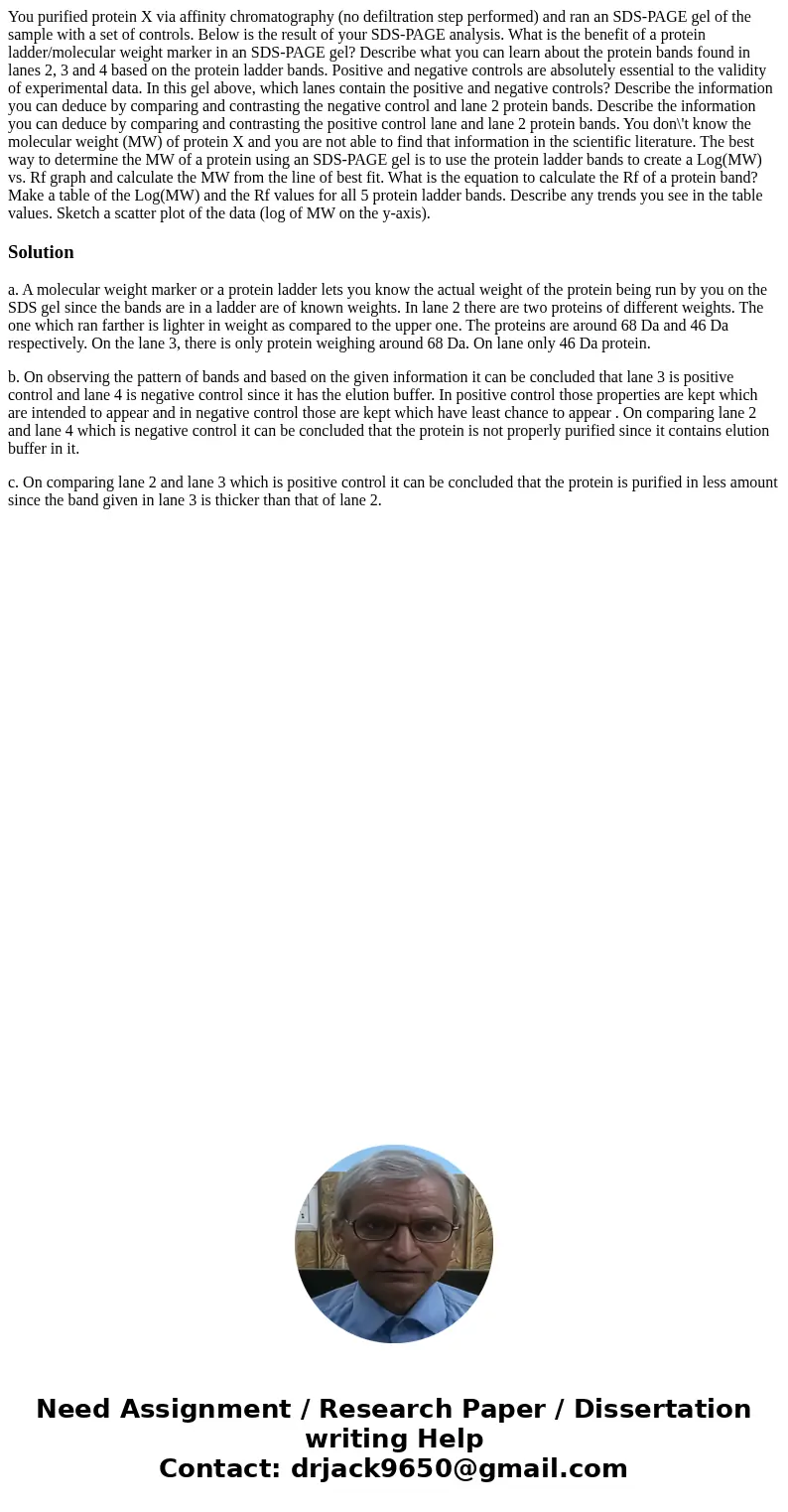You purified protein X via affinity chromatography (no defiltration step performed) and ran an SDS-PAGE gel of the sample with a set of controls. Below is the result of your SDS-PAGE analysis. What is the benefit of a protein ladder/molecular weight marker in an SDS-PAGE gel? Describe what you can learn about the protein bands found in lanes 2, 3 and 4 based on the protein ladder bands. Positive and negative controls are absolutely essential to the validity of experimental data. In this gel above, which lanes contain the positive and negative controls? Describe the information you can deduce by comparing and contrasting the negative control and lane 2 protein bands. Describe the information you can deduce by comparing and contrasting the positive control lane and lane 2 protein bands. You don\'t know the molecular weight (MW) of protein X and you are not able to find that information in the scientific literature. The best way to determine the MW of a protein using an SDS-PAGE gel is to use the protein ladder bands to create a Log(MW) vs. Rf graph and calculate the MW from the line of best fit. What is the equation to calculate the Rf of a protein band? Make a table of the Log(MW) and the Rf values for all 5 protein ladder bands. Describe any trends you see in the table values. Sketch a scatter plot of the data (log of MW on the y-axis).
a. A molecular weight marker or a protein ladder lets you know the actual weight of the protein being run by you on the SDS gel since the bands are in a ladder are of known weights. In lane 2 there are two proteins of different weights. The one which ran farther is lighter in weight as compared to the upper one. The proteins are around 68 Da and 46 Da respectively. On the lane 3, there is only protein weighing around 68 Da. On lane only 46 Da protein.
b. On observing the pattern of bands and based on the given information it can be concluded that lane 3 is positive control and lane 4 is negative control since it has the elution buffer. In positive control those properties are kept which are intended to appear and in negative control those are kept which have least chance to appear . On comparing lane 2 and lane 4 which is negative control it can be concluded that the protein is not properly purified since it contains elution buffer in it.
c. On comparing lane 2 and lane 3 which is positive control it can be concluded that the protein is purified in less amount since the band given in lane 3 is thicker than that of lane 2.

 Homework Sourse
Homework Sourse